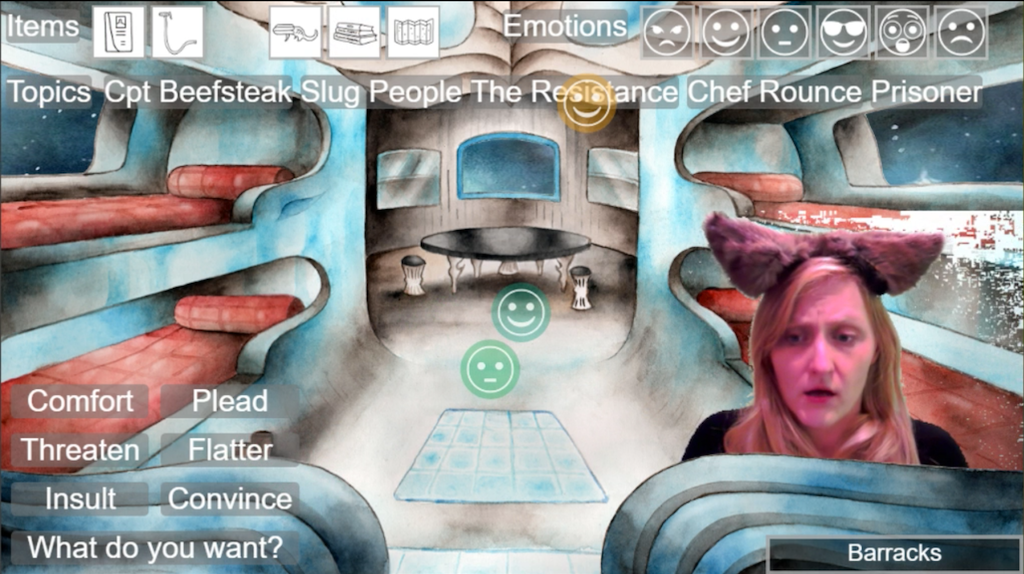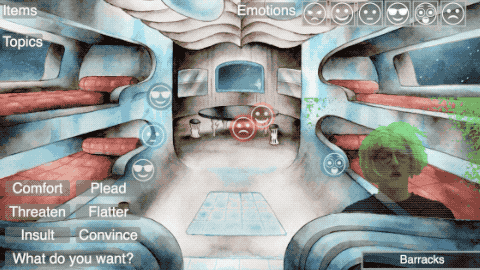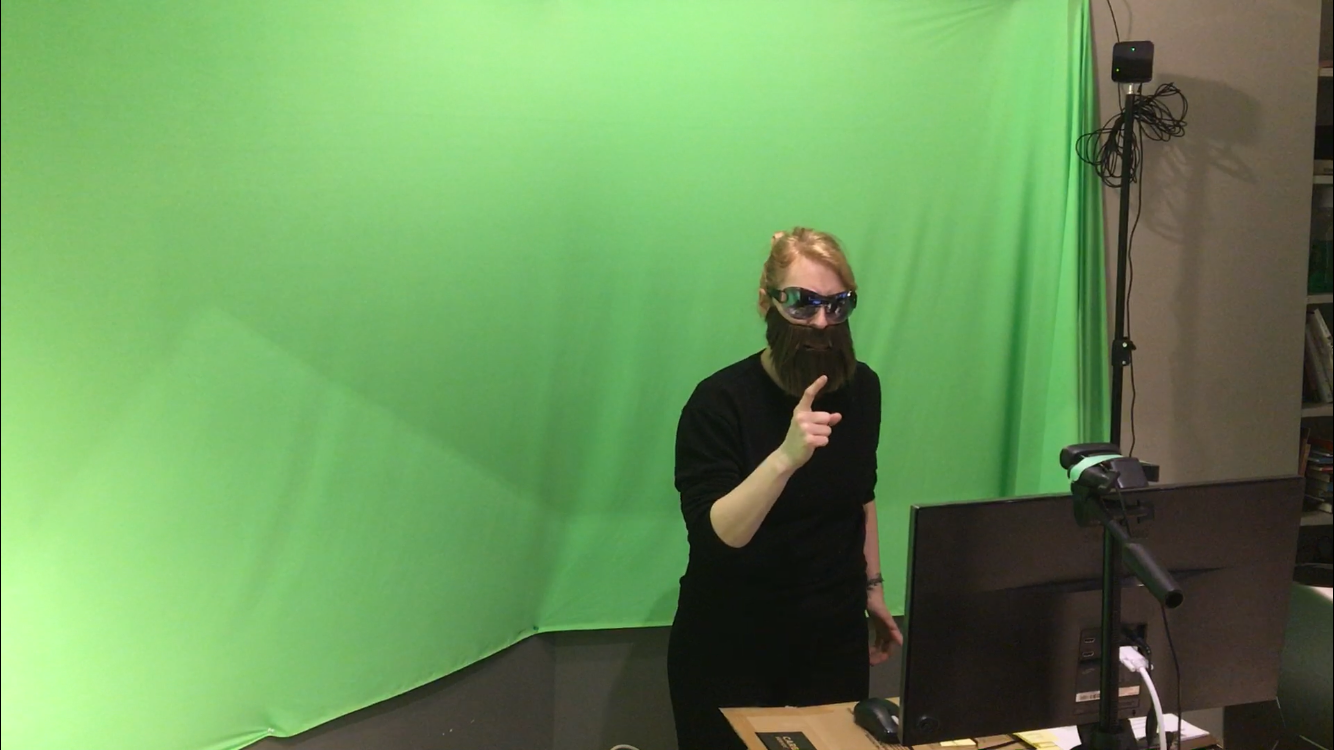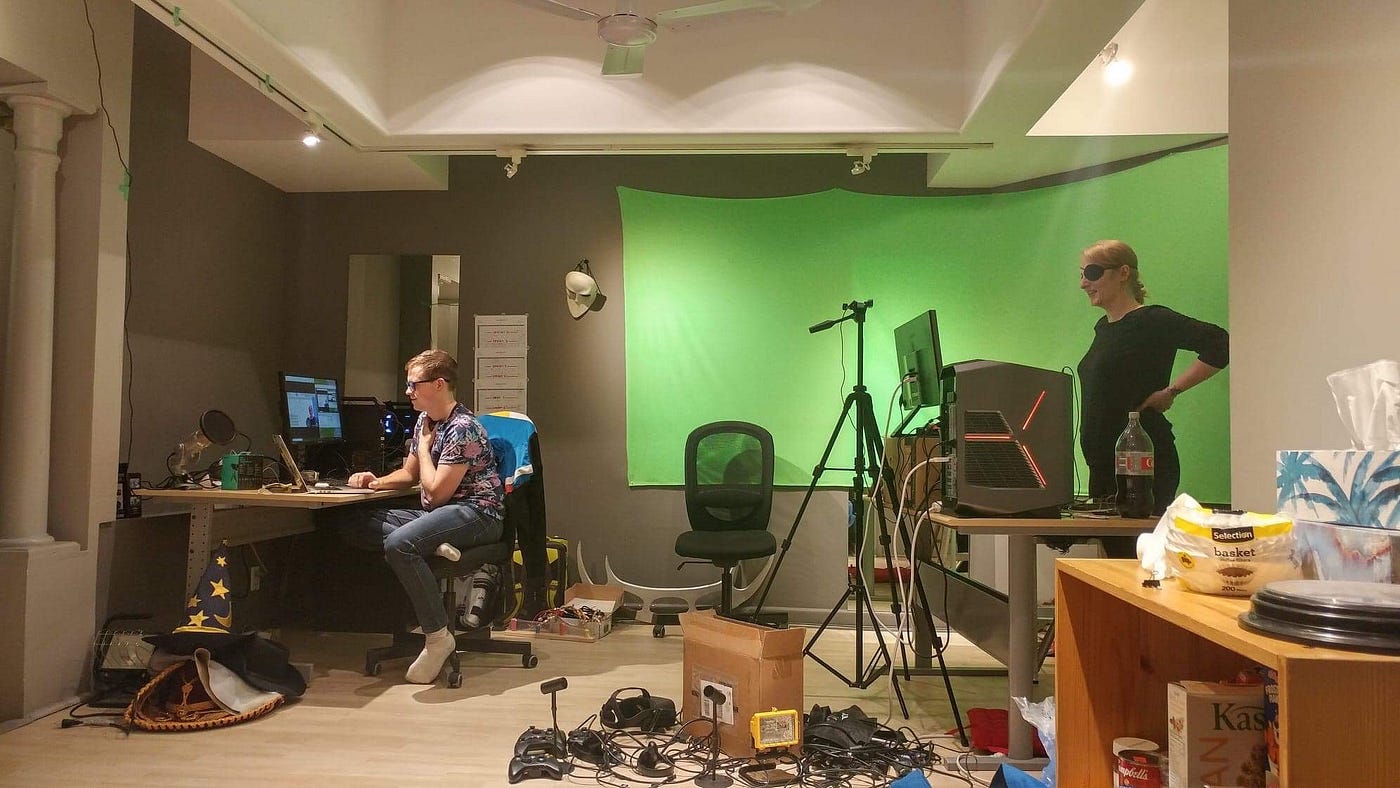
The new recruits aboard the spaceship eagerly await the arrival of the famous Captain Beefsteak. Hidden amongst the group, I try to make myself known to the captain. Following a brief “inspiring” message, they pass us to “Stace from HR,” who is able to make the exciting prospect of being aboard an intrepid space cruiser suddenly feel very mundane. We have been brought aboard the “Aluminum Cat” as new cadets, and we are now free to explore the ship and get to know our fellow cabinmates. As we begin to explore as a team, it becomes evident that there might be some form of uprising going on onboard the ship. A resistance starts to emerge, as it would appear that Captain Beefsteak is not the “prime cut” that he would have us believe. Running through halls, we start to piece the puzzle together, working out who was on who’s side, and what we need to do next.

All of this would appear to be standard fare for a video game adventure, which is what we are in currently in the middle of. Having received an email a few minutes prior, we lept straight into The Aluminum Cat, a sci-fi themed adventure experienced only by using our web browsers. It’s a campy, interactive game written by Natalie Zina Walschots done entirely remotely, with fun lively characters played by live actors; however, it was the means by which we took part in this adventure which was truly intrepid. Throughout the entire Aluminum Cat experience the only way that you are able to interact and communicate with the characters on screen and your fellow spaceship initiates is through the movement of your cursor. On screen, the cursors of all the participants are bouncing around as in real-time we make choices about how to interact with the on-screen characters, who actively respond to the cursors’ actions as well. Using a series of “universally” accepted methods as approved by HR, we are able to show our feelings through the simple cursor motions we make, “nodding” our mice in agreement or “shaking” with disdain. At times we are also given the option to “use” items on screen, which in order to use we must make a sudden movement between them and our targets.
What initially feels like a limitation to the experience turns out to be a deceptively simple tool to ensure that hilarity ensues. It is up to the character onscreen to determine what we are trying to communicate via cursor; with several participants at once, this can be amusingly unclear. A group mentality emerges from the game play and it is fascinating to be a part of this ongoing experiment as the evening goes on.

The background art, provided by artist Suzanna Komza is key to ensuring the tone of the whole evening is set from the beginning. The brightly-colored, illustrated spaceship, with its multiple rooms, is reminiscent of a late 90’s educational point-and-click computer game. All of the characters throughout the show are played by the highly energetic and very funny Stephanie Malek, who appears courtesy of a well placed green screen transmitted into the artwork. As we make our way into a new space in the ship, Malek will suddenly appear as a brand new character for us to meet, complete with a new outfit and distinctive accent. The speed of the costume changes becomes increasingly funnier as the story progresses. Malek is a fantastic host for the evening, affable and charismatic in each of her characters’ skins.
Get Edward Mylechreest’s stories in your inbox
Join Medium for free to get updates from this writer.
SubscribeSubscribe
The Aluminum Cat surprised me in many ways, particularly as I had no idea what I was getting myself into when I signed up. What a pleasant surprise to realize that as the story was being told through the browser, we as participants were able to have real interaction and agency, even when limited to engaging in one simple way. Using a mouse to interact with a screen is a staple of the modern world, but was used here in a new fashion, one which was instantly understandable. A surprising amount of connection can be found just in watching each others’ mouse movements on screen, with personality being interpreted from watching the action unfold. While there was no dialogue between the participants, we were able to communicate surprisingly well with each other. By the end of the experience, we had become a focused and effective team, and it was a genuine shame as, one by one, people exited the experience at the end.

This entertaining and innovative method for storytelling with a whole group of strangers, done completely remotely, offers a huge amount of promise for the future of at-home experiences. It is entirely possible for this structure to have applications for participants who do not share the same language, locations, or abilities, expanding the possible audience for immersive and interactive experiences. With each new group of participants, new decisions will inevitably be made, and so I would love to see more elements of choose-your-own adventure storytelling being utilized to further give each experience individuality and replayability. Incorporating live performance in remote experiences like this brings strong levels of connection and relatability to the story, and could lead to genre possibilities beyond the comedic nature of this particular adventure. The Aluminum Cat proves that readily available technological methods like cursor movements and simple green screens can be combined to create an innovative new format for storytelling.
I look forward to seeing what Dustin Freeman and Escape Character get up to next, and I hope that they continue to expand upon this fascinating new storytelling method. I just wonder which direction and what kind of story we will all be pointing at next.
The Aluminum Cat continues online; shows are available by appointment. Ticket are CA$15. Read our interview with the creators.
NoPro is a labor of love made possible by our generous Patreon backers: join them today!
In addition to the No Proscenium web site, our podcast, and our newsletters, you can find NoPro on Twitter, Facebook, YouTube, Instagram, in the Facebook community Everything Immersive, and on our Slack forum.
Office facilities provided by Thymele Arts, in Los Angeles, CA.



















Discussion